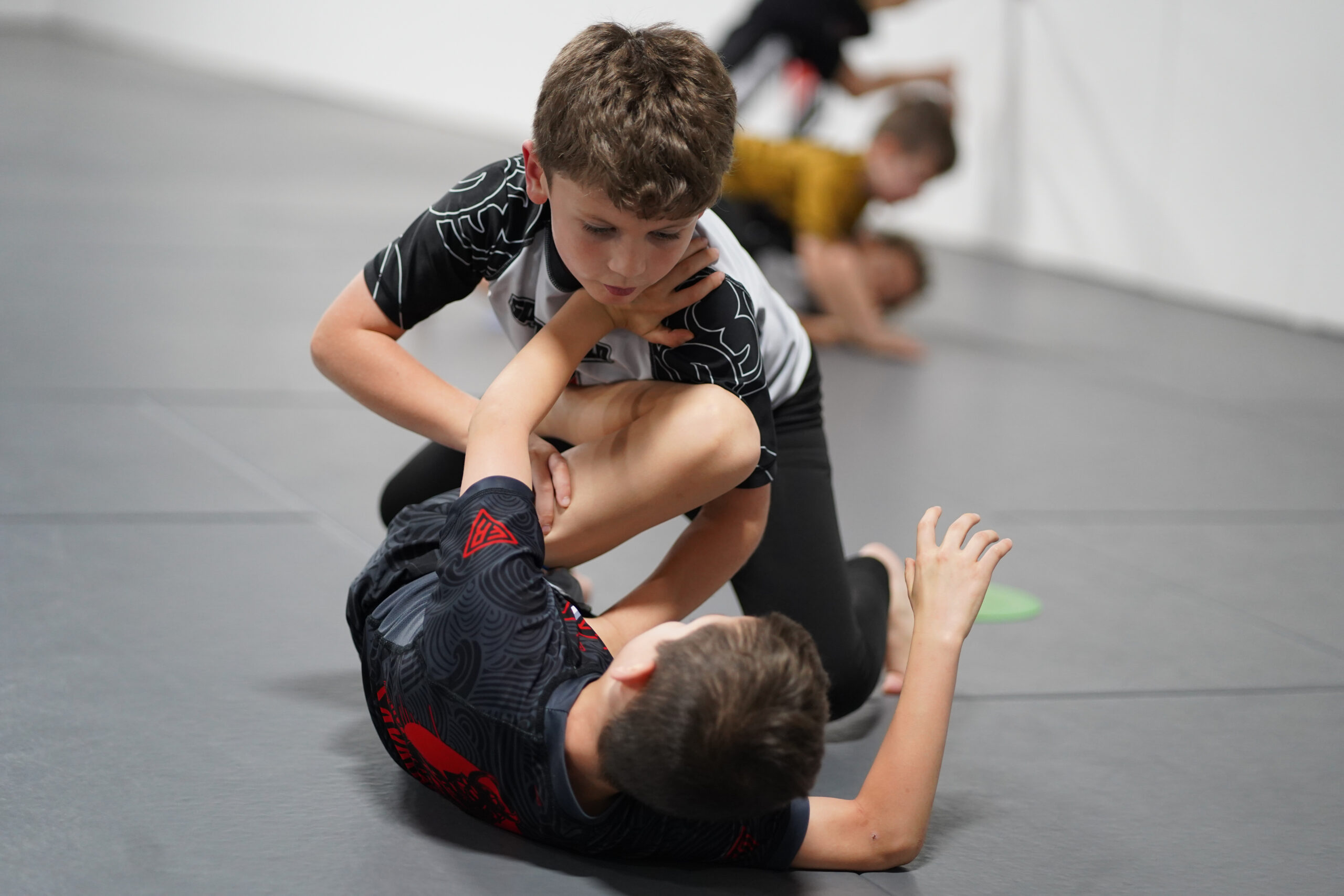Jiu-jitsu is an incredible martial art with a rich history of both self-defense and sport applications. At Springfield BJJ, we believe in the value of both approaches, but it’s important to understand their differences so we can train with purpose. Whether you’re rolling in class, preparing for a tournament, or thinking about how jiu-jitsu applies to real-life situations, one thing remains true: fundamentals are key.
The Difference Between Self-Defense and Sport Jiu-Jitsu
Self-Defense Jiu-Jitsu
Jiu-jitsu was originally developed for real-world survival, not just competition. Self-defense jiu-jitsu focuses on neutralizing a threat in unpredictable, high-stakes situations—where strikes, weapons, and multiple attackers may come into play.
Key elements of self-defense jiu-jitsu include:
• Distance management – Knowing when to engage and when to create space.
• Standing self-defense – Dealing with grabs, pushes, and punches effectively.
• Escape strategies – Getting away from bad situations rather than trying to “win.”
• Survival-based ground game – Prioritizing positional control and getting back to your feet when possible.
If someone tackles you in a parking lot, guard pulling and waiting for points won’t save you. Neither with relying on a lapel. Instead, framing, getting to your feet, or controlling them until you can escape is what matters.
Sport Jiu-Jitsu
Sport jiu-jitsu, while still effective, operates within a controlled environment where a referee ensures safety, and there are rules that limit what can and can’t be done. This allows athletes to explore complex techniques, but many of them don’t translate well outside of competition.
Some aspects of sport jiu-jitsu include:
• Point-based scoring systems – Encouraging positions that may not always be practical in a real fight.
• Techniques that require a gi – Berimbolos, lapel guards, and certain grips that disappear in a no-gi or street scenario.
• Limited concern for strikes – No need to defend punches or headbutts, which creates bad habits in a real fight.
Sport jiu-jitsu is a fantastic way to improve technical skill, sharpen competition mindset, and test yourself against high-level opponents. But if self-defense is your goal, it’s important to recognize that not everything you practice on the mats will work when someone is actively trying to hurt you.
Why Fundamentals Matter
At the core of both sport and self-defense jiu-jitsu are fundamentals—the techniques that work regardless of whether you’re in a tournament, sparring at the gym, or in a real fight.
• Base and balance – If you can’t stay on your feet, you can’t fight.
• Posture and framing – Preventing bad positions before they happen.
• Escapes and survival tactics – Getting out of bad spots quickly.
• Distance control – Keeping opponents where you want them.
The problem comes when people get too attached to specialized techniques that only work under ideal circumstances. A deep half-guard sweep might be great in a match, but if you try it while someone is throwing punches at your face, you’ll regret it.
It’s Okay to Learn Both—But Stay Realistic
We encourage students at Springfield BJJ to train both styles because they each offer valuable lessons. Sport jiu-jitsu develops sharp technique, problem-solving, and competition experience, while self-defense jiu-jitsu prepares you for unpredictable real-world encounters.
However, always ask yourself: Why am I learning this? If your main goal is self-defense, don’t rely on moves that only work when someone is playing by the same rules as you. If you love competition, that’s great—but understand that what wins medals might not keep you safe in a real altercation.
At the end of the day, jiu-jitsu is about being prepared for anything. Train smart, keep your fundamentals sharp, and remember that the best technique is the one that works when you need it most.
See you on the mats!
— Springfield BJJ

Leave a Reply